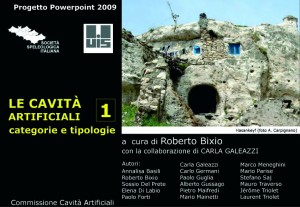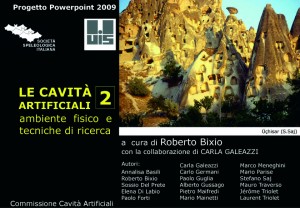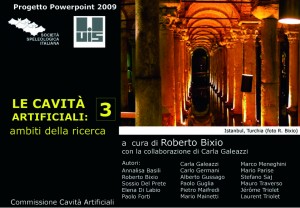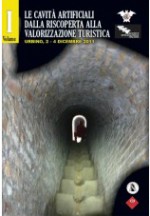Le cavità artificiali
Per cavità artificiali si intendono, convenzionalmente, le opere sotterranee di interesse storico ed antropologico realizzate dall’uomo o da esso riadattate alle proprie necessità. Sono pertanto considerate cavità artificiali sia le opere realizzate dall’uomo (scavate, costruite in sotterraneo o divenute ipogee per sovrapposizione stratigrafica) che quelle naturali da esso riadattate, almeno in parte, alle proprie necessità. Ad esempio le grotte naturali dell’arco alpino utilizzate come rifugio durante la prima guerra mondiale, gli eremitaggi in ripari naturali, i rifugi abituali dei pastori durante la transumanza ecc. È ovvio che la dimensione del “fenomeno cavità artificiali”, in un dato luogo, sia per numero e per estensione in diretta correlazione con la durezza della roccia e la relativa possibilità e facilità di scavo.
Conventionally, artificial cavities are the underground works of historical and anthropological interest, man-made or readjusted by man for his needs. Where climatic conditions or historical events required it, and the morphology and lithology were favourable, techniques of excavation or construction in negative (by subtraction) were developed, and they produced in the course of ages a large part of what we now call artificial cavities. They are underground structures, spread all over the world, diversified by age, excavation technique and purpose, and of which man is the speleo-genetic factor. The humanity, since its very beginning, has been familiar with the subsurface and the underground sites. The artificial cavities are often the only evidence of pre-existing territorial organisations and of a lifestyle wiped out by the present urban development, owing to new and different needs developed in the course of time. The “phenomenon of artificial cavities” in a given place, both by number and by extension, is in direct and inverse correlation with the hardness of the rock, and, as a consequence, with the easiness of excavation.
Per approfondire:

Risorse didattiche SSI-UIS per la speleologia e il carsismo. Le Cavità Artificiali categorie e tipologie.

Risorse didattiche SSI-UIS per la speleologia e il carsismo. Le Cavità Artificiali ambiente fisico e tecniche di ricerca.


